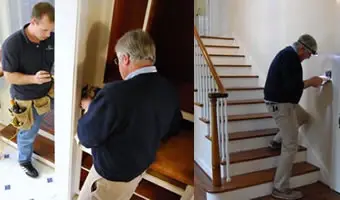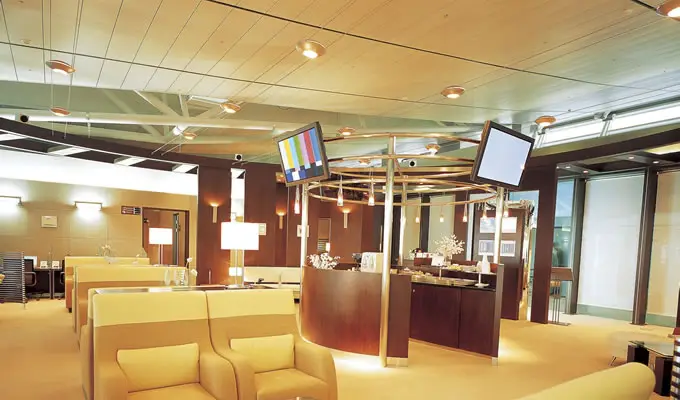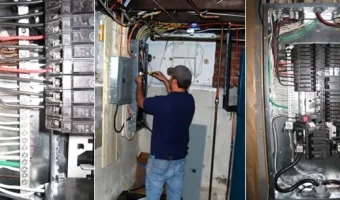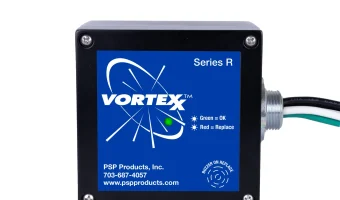When it comes to electrical sub panel installation or upgrades, relying on the expertise of professionals is essential. At Turning Point Electric in Spring Hill, FL, our skilled electricians are dedicated to providing top-notch services to homeowners and businesses alike. Whether you need to add extra circuit capacity to your existing electrical panel or streamline the power distribution for new additions, our team ensures the job is done correctly and safely. With years of experience, we prioritize your safety and satisfaction, delivering reliable and efficient solutions tailored to your specific needs.
Deciding whether to add a sub panel or upgrade your main panel depends on several factors. Here are some key considerations to help you make an informed decision:
Consult a Licensed Electrician: We strongly recommend consulting with our licensed electricians at Turning Point Electric. We perform thorough in-person assessments of your electrical system to provide personalized recommendations based on your specific needs, ensuring your electrical setup is safe, efficient, and up to code.
An electric sub panel serves as an extension of your main electrical panel, providing additional power distribution to various parts of your home or business. Here’s why you might need an electric sub panel installation or upgrade:
At Turning Point Electric in Spring Hill, FL, we are committed to delivering safe, efficient, and high-quality electrical sub panel installations and upgrades. Our comprehensive approach includes:
Enhanced Safety: A properly installed sub panel reduces the risk of electrical hazards by ensuring that power distribution is balanced and circuits are not overloaded.
Increased Electrical Capacity: Sub panels provide the necessary capacity to support additional circuits, accommodating new appliances, devices, and home expansions without overburdening the main panel.
Improved Efficiency: By distributing electrical load more effectively, sub panels enhance the overall efficiency of your electrical system, preventing frequent outages and minimizing the risk of circuit overloads.

Through a friend I was connected with Glenn who I must say, as I am a retired general contractor, is one of the most responsive, polite and professional contractors I have encountered since I've moved to this area. He gave a estimate, performed the work, and furnished his invoice as quoted. Also made a return trip to help me connect my heat pump that I told him I would do. If you need electrical work, believe me you really need Glenn .
Several factors can influence the cost of installing an electrical sub panel. Here are some general considerations:
Note: Installing an electrical sub panel is not a DIY project and should be carried out by a licensed electrician. Turning Point Electric’s experts will assess your electrical needs, consider these factors, and provide you with a detailed quote based on your specific requirements and local regulations. Always prioritize safety and quality when it comes to electrical work.
The location of a subpanel depends on the specific needs and requirements of your electrical system and the intended purpose of the subpanel. Here are some common locations for subpanel installation:
Considerations for Choosing a Subpanel Location:
Always consult with a licensed electrician to determine the most appropriate location for your subpanel. Turning Point Electric’s experts will assess your specific electrical needs and provide professional guidance to ensure a safe and compliant electrical subpanel installation.
The number of circuits you can install on a subpanel depends on the amperage capacity of the subpanel and the individual circuit breaker sizes used. A subpanel typically has a main breaker that serves as the panel’s overall capacity limit. The total amperage rating of all the circuit breakers in the subpanel should not exceed this main breaker’s rating.
Common Subpanel Capacities and Circuit Limits:
Important Notes:
Consult with a Licensed Electrician: When planning the installation of a subpanel, consult with a licensed electrician from Turning Point Electric. They will calculate your electrical load requirements and recommend the appropriate subpanel size and breaker combination to meet your needs safely and in compliance with local electrical codes. Proper planning ensures that you have enough circuits for your current and future electrical demands while staying within the subpanel’s capacity limits.
Yes, a main breaker is required in a subpanel. The main breaker serves as the disconnecting means for the subpanel, allowing you to shut off all power to the subpanel circuits in case of an emergency or for maintenance purposes. It acts as a safety feature, enabling you to isolate the subpanel from the main electrical service.
Differences Between Main Breakers:
Sizing the Main Breaker:
When installing a subpanel, the main breaker in the subpanel should be sized to match the capacity of the subpanel and the feeder wire that connects it to the main panel. For example, if you have a 100-amp subpanel, the main breaker in the subpanel should be rated for 100 amps. This ensures that the total current flowing through the subpanel does not exceed its capacity, preventing overloading and potential hazards.
Installation by Professionals:
Always have a licensed electrician handle the installation of a subpanel to ensure it is done correctly and safely, adhering to local electrical codes and safety standards. The electrician will size the main breaker appropriately and ensure the subpanel installation is safe and compliant.
For all your electrical sub panel installation and upgrade needs in Spring Hill, FL, trust the experts at Turning Point Electric. Our licensed electricians are committed to ensuring your electrical system is safe, efficient, and capable of meeting your current and future power demands.
Call us today at (703) 494-3989 to schedule a consultation and discover how our professional electrical services can enhance the safety and functionality of your home or business.

Turning Point Electric stands out among residential electrical contractors because our level of responsiveness to our customers, our commitment to quality and our insistence on safety is unparalleled.

Turning Point Electric offers a wide range of commercial electrical services from troubleshooting, electrical repair and upgrades to maintenance. Our experience and knowledge also enables us to provide energy saving and lighting solutions.

Our experienced electricians can provide sound advice, service, repair or replacement of your electrical panel and circuit breakers. We also provide Electrical Service Upgrades among other upgrades & repairs.

Protect your entire electrical system with our Whole Home Surge Protection solutions. Our surge protectors ensure that all your appliances, electronics, and devices remain safe and operational while offering the best warranty in the business..





A short description of your company’s role in the success of the project.